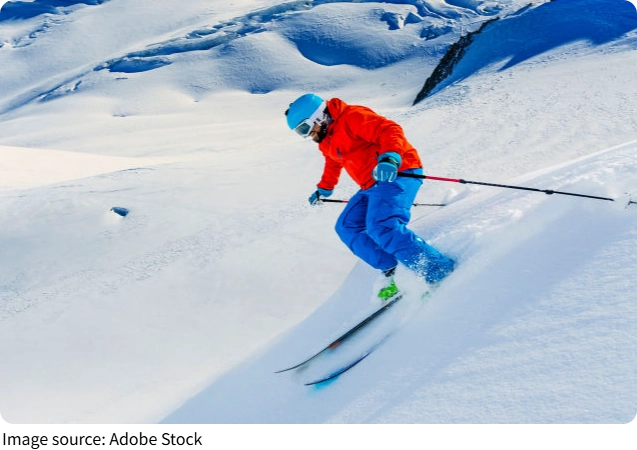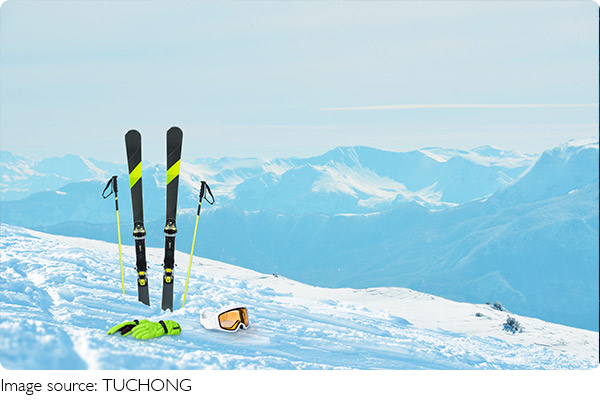Full-Body Skiing

Have you ever thought skiing was just a fun winter hobby or simply a way to enjoy the snow? Think again. Skiing is actually one of the most complete sports we can take part in. From head to toe, every part of our body is engaged.
It’s not just a lower-body exercise—our arms, core, back, and even our mind play a big role. In fact, skiing works muscles we often forget in daily life, making it a perfect way to stay fit while having fun.
Leg Power: The Engine Behind Every Turn
Let’s start with what we feel first—our legs. As we ski down a slope, our thighs, calves, and hips are constantly engaged. Every turn, stop, and glide uses the strength of our quads and hamstrings. Our knees stay bent, absorbing bumps and helping us steer. It’s no wonder that after a day on the mountain, our legs feel like they’ve done a full gym session!
But it’s not just strength. We also improve our endurance, especially on long runs or when skiing multiple days in a row. Strong legs give us control, speed, and most importantly, safety on the slopes.
Core Muscles: The Hidden Hero of Balance
A strong core is key to good skiing. Every time we shift weight, lean into a turn, or stay upright on uneven snow, our abdominal and lower back muscles jump into action. Unlike sit-ups or crunches, skiing strengthens the core in a more natural and functional way.
We often don’t realize how much our core is working until we’re sore the next day. But that’s a good sign—it means we’ve used muscles that support our spine, improve posture, and help with overall stability, both on and off the snow.
Upper Body: Not Just for Holding Poles
While skiing may look like a leg-heavy sport, our arms and shoulders are far from idle. Ski poles aren’t just for style—they help us push, balance, and steer, especially on flat areas or tricky turns. When we use poles properly, we activate our shoulders, biceps, and triceps.
Our upper back also gets a workout as we hold a forward-leaning posture. This helps build strength and endurance in the upper body, which supports our whole skiing technique.

Joints and Coordination: Training We Don’t Get in the Gym
Unlike machines at the gym that isolate single muscles, skiing requires joint coordination. Our ankles, knees, hips, shoulders, elbows, and wrists must all work together smoothly. This kind of full-body coordination trains our nervous system, improves reaction time, and helps prevent injury.
Even our smaller stabilizing muscles—those we often overlook—get engaged. This means better balance and flexibility, not only for skiing but for everyday life.
Cardio Benefits: Strengthening the Heart and Lungs
Skiing is an aerobic sport, especially when we go for longer runs or ski in higher altitudes. Our heart rate rises, our lungs work harder, and we burn a serious number of calories—all while enjoying fresh mountain air.
Unlike indoor workouts, skiing in cold weather adds extra resistance. Our body has to work harder to stay warm and move efficiently, giving us an even better cardio workout without even noticing it.
Let’s Make Skiing Part of Our Healthy Life
So, Lykkers, if we’re looking for a fun way to build strength, improve balance, and boost our endurance—all at the same time—skiing is a top choice. It’s not just a winter pastime. It’s a full-body training session wrapped in snow, speed, and scenery.
This winter, instead of staying indoors, let’s get outside, strap on some skis, and experience how good full-body movement can feel. Our bodies will thank us—and we’ll have a blast doing it.
Are you ready to challenge your whole body on the slopes? Let us know—we’d love to hear about your skiing journey!
THE PERFECT SKI STANCE | body position and posture in varying conditions and terrain
Video by Maison Sport
-
 Chase Every PointThis One Sport Could Change How You Think, Move, and Feel—Here’s Why Tennis Might Be the Game Your Life’s Missing!
Chase Every PointThis One Sport Could Change How You Think, Move, and Feel—Here’s Why Tennis Might Be the Game Your Life’s Missing! -
 Chase Every PointThis One Sport Could Change How You Think, Move, and Feel—Here’s Why Tennis Might Be the Game Your Life’s Missing!
Chase Every PointThis One Sport Could Change How You Think, Move, and Feel—Here’s Why Tennis Might Be the Game Your Life’s Missing! -
 Full-Body SkiingThink Skiing Is Just Legs? Discover the Surprising Muscles You’re Training Without Even Noticing!
Full-Body SkiingThink Skiing Is Just Legs? Discover the Surprising Muscles You’re Training Without Even Noticing!